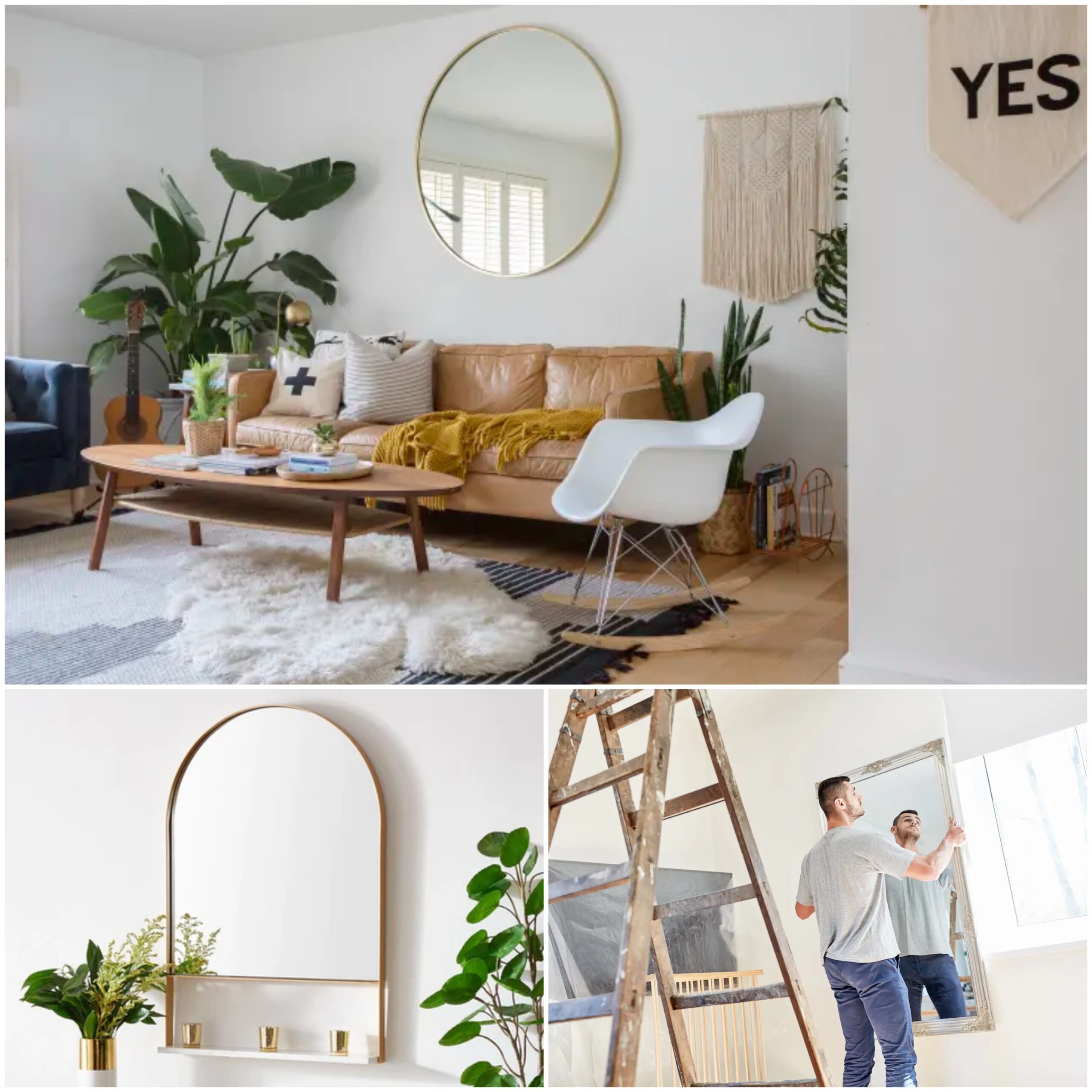Table of Contents
In lighting design tips we come to know about major factors in how we view our homes. It is not just about lighting a room; it is also about creating an atmosphere that expresses our taste and improves usability.
Consider the following scenarios to see how lighting affects our daily lives, the soft lighting above the dining table during a special dinner with loved ones, the bright task lighting in the kitchen while you prepare a meal, or the warm glow of a bedside lamp as you unwind with a book.
Let’s explore how lighting may make your house a cozy, fashionable, and useful area.
Basics of Lighting Design
Lighting design is more than just making sure you can see where you are going; it is also about setting the mood for your environment and your way of life.
1. Set the Mood and Ambiance
- Lighting is more than just brightness; it is also about the atmosphere it creates.
- A room can feel lively and energized by bright, cool light, or cozy and inviting by soft, warm light.
- You can set the ideal mood for any occasion by selecting the appropriate lighting and fixtures.

2. Types of Lighting Fixtures
- Ambient, task, and accent lighting are the three primary categories of lighting fixtures.
- Ambient lighting creates a mood and offers general illumination for a space. Task lighting is more directed and makes it easier to see what you’re doing, like chopping vegetables or reading a book.
- Accent lighting draws attention to specific parts, like architectural details or artwork, and creates drama.
- You can add layers of light that give your room depth and interest by combining different kinds of lighting.
3. Layer Lighting for Functionality and Aesthetics
- The layering of various lighting types is one of the fundamentals of good lighting design.
- You can design a flexible lighting scheme that satisfies your aesthetic preferences as well as your practical needs by combining ambient, task, and accent lighting.
- Recessed lighting can be used for ambient lighting, task lighting can be provided by pendant lights over a kitchen island, and wall sconces can be used to draw attention to decorations or artwork.
- This kind of layering light allows you to design a space that is both beautiful and useful, while also being dynamic and aesthetically pleasing.
Assessing Your Space and Needs
1. Purpose and Function of Each Room
Think for a moment about how you use every room in your house.
Is it a place for socializing, working, or relaxing? You can choose the kind of lighting that best meets your needs by being aware of each space’s main purpose.
In this case, brighter, task-oriented lighting may be necessary in a home office to promote productivity, but softer, more muted lighting may be needed in a bedroom to promote relaxation.
2. Natural Light Sources and Architectural Features
The amount of natural light in your house can greatly influence how much artificial lighting you use.
Keep track of the locations of the windows and the amount of natural light that reaches each room during the day.
Also, take notice of any architectural elements that might affect the way light is distributed in the room, including exposed beams, alcoves, and vaulted ceilings.
You can carefully position lighting fixtures to boost natural light and draw attention to architectural features by keeping these factors in mind.

3. Identify Areas that Require Specific Lighting Tasks
Your home lighting design requirements will not remain the same in every area. Make a list of everything that happens in each area and note which areas need particular lighting maintenance.
For that, preparing food on kitchen countertops might call for bright task lighting, but a reading nook might benefit from a focused reading lamp.
You can make sure that your lighting design satisfies the practical requirements of your daily routines by identifying these areas.
Choosing the Right Fixtures and Bulbs
1. Factors to Consider When Selecting Lighting Fixtures
There are some considerations when selecting lighting fixtures. Make sure the fixtures blend in with the overall lighting design by taking seriously the décor that already exists in your home and its style.
To choose the right size and arrangement of fixtures, consider the room’s dimensions and scale as well.
In a large foyer, a single pendant light might be lost, but in a small dining room, a large chandelier might be overwhelming.
You can get an overall and eye-catching lighting design by choosing fixtures that are equal to the area and in line with your personal tastes.
2. Understand Different Types of Light Bulbs
There are several types of light bulbs available, each with its own characteristics and benefits.
Incandescent bulbs produce a warm, inviting light but are less energy-efficient than newer options.
LED bulbs are highly energy-efficient, long-lasting, and available in a variety of color temperatures to suit different preferences.
CFL bulbs are also energy-efficient but may take some time to reach full brightness and can contain small amounts of mercury.
By understanding the pros and cons of each type of bulb, you can choose the right option for your needs and priorities.

3. Energy Efficiency Consideration and Smart Lighting Options
Energy efficiency is an important issue to take into consideration when choosing light fixtures and bulbs.
With a much lower energy consumption and a longer lifespan than incandescent or CFL bulbs, LED bulbs are the most energy-efficient option on the market.
Also, take seriously smart lighting design solutions that let you use voice commands or a smartphone to remotely control your lights.
By modifying brightness levels and scheduling lighting by your daily schedule, smart lighting can help you save energy.
Energy-efficient and intelligent lighting solutions can help you lower your carbon footprint and save money on energy costs.
Creating a Lighting Plan
1. Mapping out a Lighting Layout for Each Room
- Make a floor plan for every room and mark any important spots that need lighting first.
- Think about the activities that occur in each area and how lighting design might improve them.
- In the living room, for case in point, you might want to use ambient lighting to draw attention to the seating areas and use task lighting next to side tables or reading nooks.
- After you have a general plan, you can start positioning the fixtures to make sure the entire space is evenly covered and has enough light. There are various researches done on design & technology for lighting systems.
2. Balance Different Types of Lighting for Functionality and Aesthetics
- A well-lighting design scheme combines several lighting types to satisfy both aesthetic and functional requirements.
- To create a layered and adaptable lighting design, try to find a balance between ambient, task, and accent lighting.
- To get the desired effect, experiment with different light levels and fixture placements.
- Keep in mind that lighting should improve your space’s overall ambiance and style in addition to fulfilling a functional need.
3. Incorporate Lighting Controls for Flexibility and Convenience
- Remember to think about how you will regulate your lighting.
- Adding programmable timers, smart lighting controls, and dimmer switches to your lighting scheme can increase its convenience and flexibility.
- While smart lighting design controls allow you to control your lights remotely with a smartphone or voice commands, dimmer switches let you change the brightness of your lights to suit different activities and moods.
- These controls make it simple to modify your lighting design to accommodate shifting requirements and tastes.
The Psychology of Color in Interior Design: Color Your Mood
Hey game lovers, do you want a gaming theme interior design, don’t miss this.
Implementing Lighting Design Techniques
1. Highlight Architectural Features with Accent Lighting
Accent lighting is a great way to highlight your home’s distinctive architectural elements, like built-in shelving, arched doorways, and exposed beams.
Utilize wall-mounted fixtures, track lighting, or spotlights to highlight these elements to give the space depth and visual appeal.
You can add a little drama and yet bring out the character and charm of your space by carefully placing accent lighting.
2. Create Focal Points and Visual Interest with Decorative Fixtures
In addition to providing light, decorative fixtures may also function as statement pieces that improve a room’s overall aesthetic and atmosphere.
To draw attention to specific areas and provide visual interest to your room, think about adding wall sconces, pendant lights, or chandeliers.
Pick fixtures that go well with the room’s current architecture and decor, whether you like a more traditional, elaborate style or a more modern, minimalist appearance.
You can increase the visual appeal of your house and provide useful lighting design at the same time by choosing the appropriate decorative fixtures.

3. Boost Task Areas with Targeted Lighting Solutions
For spaces where particular activities occur, like cooking in the kitchen, reading in the living room, or working at a desk, task lighting is important Install under-cabinet lighting in the kitchen to provide easier food preparation by illuminating the countertops.
To provide focused lighting for tasks, place floor or desk lamps close to workspaces.
Your home can become more functional while simultaneously increasing visibility and productivity by customizing your lighting solutions to meet the demands of each task area.
Tips for Enhancing Style and Functionality
- Install dimmer switches to easily change the lighting to suit various activities and occasions in key areas like the dining room, living room, and bedroom.
- Also, choose fixtures that can be adjusted, like swing-arm lamps or track lighting design, so you can focus light where it is most needed.
- Select lighting fixtures that go well with the design and feel of your room, whether it is rustic and traditional or modern and minimalist.
- Think about the color temperature of your light bulbs and how they complement the hues in your space. Warmer tones can evoke a feeling of coziness, while cooler tones may inspire feelings of vitality and freshness.
- Install pathway lighting to improve nighttime safety and navigation along driveways and walkways.
- To create a warm and inviting atmosphere for gatherings and events, use wall-mounted fixtures, lanterns, or string lights to illuminate outdoor entertaining areas like patios, decks, and gardens.
- To provide your outdoor space with more depth and dimension, you should also think about adding landscape lighting design to highlight trees, shrubs, and architectural elements.
Bottom Line
The art form of lighting design blends imagination, utility, and practicality.
You can add elegance and sophistication to your home with the correct strategy and attention to detail, making it a place that better represents your individuality and improves your quality of life.











